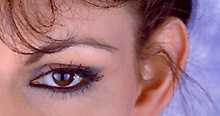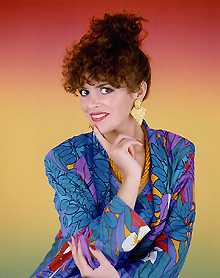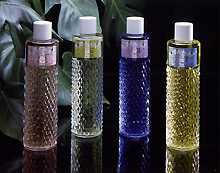
The quality of print output from these files, however, remains a problem. It's not much use being able to get a pro Photo-CD scan for a few pounds, if after doing some work on the picture you must then pay $50 - or even $150 - for a neg of the file before you can get a photo print with a value to the client around half that.
Desktop computer colour printers use non-photographic materials. The colour, high-resolution image structure and permanence of dye sub prints does not match up to normal RA4 photographic paper. Inkjet printers can be ruled out for everyday photo image printing although the best can create striking 'art prints' resembling non-silver processes.
The Holy Grail of the industry has been the digital printer using real photographic paper. Some do exist - the Ilford Digital Image Printer which uses Ilfochrome (formerly Cibachrome) materials, and various high resolution film recorders which will also print on paper at prices few can afford.
Photofinishing lab machines are now incorporating Light Valve (LCD) or Cathode Ray Tube (CRT) printing, partly to handle basic digital retouching, and increasingly to output the index (contact sheet-style) prints which are part of the forthcoming Advanced Photo System. These systems are not ideally suited to professional output, being limited to 7 x 5" prints and integrated with d & p service lines which can't spare the capacity to handle single image printing from customer data disks.
The most economical way of getting real photo prints from most labs or bureaux is to have them 'write' a real photo negative from the data disk. Film writers use high resolution CRT imaging to produce 35mm, 120 or 5 x 4 negs. A typical price for a 120 negative with 8,000 lines resolution (lengthways) is from $25 upwards, often as high as $150.
This is not always an ideal solution. Though the negative can be used to make economical print runs, it has the grain of the film added to any grain in the scan, and can pick up scratches and dust with repeated use. A far better solution would be to use the CRT to imaging directly on photographic paper from the data file - which is as free from grain, dust, scratches or other flaws as the digital photographer or scanner and retoucher care to make it. Unlike a negative, which can never be copied perfectly, a digital file can be copied and a disk mailed to a digital lab with not the slightest risk of a valuable 'original' being lost or damaged.

Such a perfect solution - a digital photo printer working from your disks and providing real photo prints - does already exist and is capable of staggeringly good results, more than a match for any conventional enlarger print, let alone any other form of digital photo output.
It�s a small, self-contained unit with its own RA4 processor, called the FotoPrint RA - and it is expected to become the standard output device for photo labs whose customers want prints without intermediate negatives, on Kodak, Fuji, or Agfa paper. It has the great advantage of making digital images eligible for any one of the major manufacturers' competitions and awards, and providing photo prints permanent enough to comply with any organisation's buying policies.
The unit, sold for around �23-�30,000 GB pounds depending on software and accessories, enables first-off image production as fast as a filmwriter (2-3 minutes) but can follow this up by running off 100 10 x 8s an hour. This is something which has previously called either for writing a negative and using this for a conventional print run, or using an expensive light-valve system.


Above left: a Leafscan 45 file from an original 6 x 6cm Fujichrome transparency by David Kilpatrick. Right: a Nikon Scantouch re-scan of a FotoPrint RA 8 x 8 inch print made from this file
The main advantage of the FotoPrint is that the final result exactly resembles a first-generation photographic print, and gives no sign of its digital origin. Scans from transparencies are printed on colour negative paper, with all the benefits of superior contrast control and subtle tonal gradation this confers. A scanned slide printed on the FotoPrint is streets ahead of any reversal or interneg print. To match the result you would have to use the most expensive contrast-masked hand printing service.

A 200 per cent enlargement of the detail of the print (further enlarged here due to being at screen resolution)
Given the advantages outlined, and the familiarity of photo labs with RA4 chemicals and paper, we are left with one puzzle � why, when this product has been exhibited since the 1994 photokina as the Metrum FotoPrint, has its uptake by labs been minimal?
Marrutt's directors saw the same evidence, but were curious enough to want to know why a theoretically ideal system should turn out lacklustre specimens. They found that maintenance of fresh chemicals, choice of papers, adjustment of colour settings and choice of sample files could make a vast difference.
In taking on the distributorship, Marrutt determined to spend several months fine-tuning the system. They relentlessly picked brains (even ours at Photon), sought samples to output, cadged chemicals and paper from suppliers, and ran the machines all day. They worked closely with both photo laboratory and digital imaging neighbours.
After receiving their own new sample prints, which indicated that the FotoPrint RA was quite much better than we had thought, I prepared a set of scan files on our Leafscan 45, from 35mm, 6 x 4.5, 6 x 6, 6 x 7, 6 x 9cm and 5 x 4 inch originals. We set the files up for sizes between 8 x 8 inches and A4, at 300dpi, ranging 16 to 28Mb uncompressed. They were set up for standard calibrated Photoshop settings - screen colour temperature to simulate 6500K daylight, normal contrast of Gamma 1.8.


Above left: a Leafscan of a 6 x 4.5cm transparency by David Kilpatrick showing good saturation. Right: a Nikon Scantouch rescan from the FotoPrint RA result, which if anything was better than the scan
The results astounded me. The prints exactly mirrored the level of sharpness and detail in the scan; soft focus effects, saturated colours, textural detail and smooth skin tones were all reproduced with true photographic fidelity.


The black background in this comparison pair (left and right, original scan and rescan from FotoPrint, as before) shows how well the extra photographic control given by Marrutt's engineers has benefited the system. Original 6 x 9cm Fujichrome by Richard Bradbury
One test involved a solid black background for a studio still life, carefully set to zero brightness in the scan file. This now yielded a black as dense as any normal RA4 print, perfectly neutral, and with threshold detail clearly defined.
Our only criticism was a blue shift in the colour balance - our computer monitors are fully calibrated using a tristimulus colorimeter, and our neutral tones are precise RGB values. The FotoPrint neutral was too blue. Marrutt suggest that our files needed to be warmer, but most Photoshop users will be working to the same settings. The blue bias would tend to give better results from Photo-CD images which are often yellowish when imported to Photoshop without colour-matching correction.
For obvious reasons, any reproductions we make from the sample prints are almost meaningless in print. I hope they give some idea of quality. Marrutt have been provided with the digital files, and potential buyers wanting to see the actual results from these images can now do so.
The modest capital cost of the FotoPrint RA FP1000 should enable digital prints at a price comparable to hand prints (plus multiple images on single sheets, and long runs) and at higher cost the FP2000 with RIP makes full A4 PostScript page proofs.
The primary competitor, with a lower capital cost, is the Fujix Pictrography 3000, with prints which are equally permanent but rather more punchy, lacking the subtle shadow detail of the FotoPrint. Solid blacks are denser and saturated colours stronger.
Pictrography systems have a high per print cost, and each print costs as much as the last - to the operator, around $2-3 each. The FotoPrint, in contrast, has a materials and chemistry cost one tenth of this. We have found it hard to get print runs of Pictrography 10 x 8s for less than $10 a print, but would expect FotoPrint runs to be competitive with conventional pro lab work.
You could also make a copy negative successfuly from a first-off FotoPrint 10 x 8, because the tonal range is subtle and contrast is fully controlled. Copy negs made from Pictrography prints have been sharp, but lacking in both highlight and shadow information. The FotoPrint is also more sympathetic to portraits, fashion, beauty and people shots in general. It can produce lustre surface prints for wedding albums and framed portraits - as no desktop dye sub printer can - and Duraclear print transparencies.
In FotoPrint, Marrutt Limited (and also Sienna in the USA) have a winner. Marrutt's photographic expertise has been able to prove its potential in the UK, and they deserve the renewed attention now being given to this unique hybrid computer photo-peripheral.
Readers in the UK can obtain free sample print/s from either the first portrait, or the still life, used in this feature; and they can send their own slide (at own risk) for a Leaf Lumina scan and a print. Professionals in photography or related fields get this free, amateurs have to pay a small charge of �11.75 GB pounds including VAT. The printed edition issue of Photon which contains the free offer can be purchased by mail order for �3 (GB pounds) in the UK or �5 / $7.50 from any overseas location, by faxing Visa or Access card details to (+44) 1573 226000 with your address, and a request for one copy of Photon January 1996 edition.
Photon can supply a CD-ROM containing the full size RGB files used for these tests, together with further files, prints and final litho printed magazine copies, to developers or bureaux wanting to carry out tests on other systems or have a closer look at our standards. The cost for this package, including rights to use the images in demonstration literature but not in advertising, is �250.00 GB pounds.
What we now need is a higher level of installation by photo labs serving photographic customers (not just by bureaux). Until output is nationally available, there will be little demand for it. Once it becomes widely known, most photographers will be loathe to use anything else for output from digital files or scans.
- David Kilpatrick